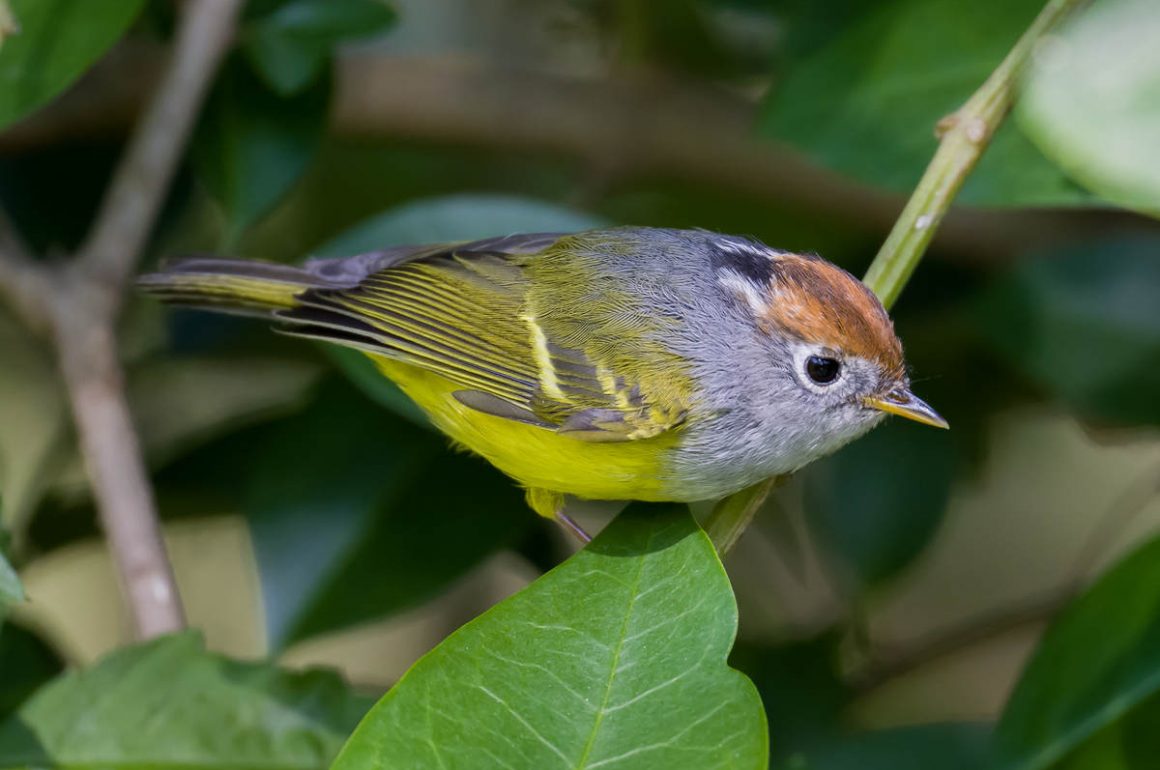
November in Shanghai means the large-scale return of buntings, such as the smallest of them, the appropriately named Little Bunting.
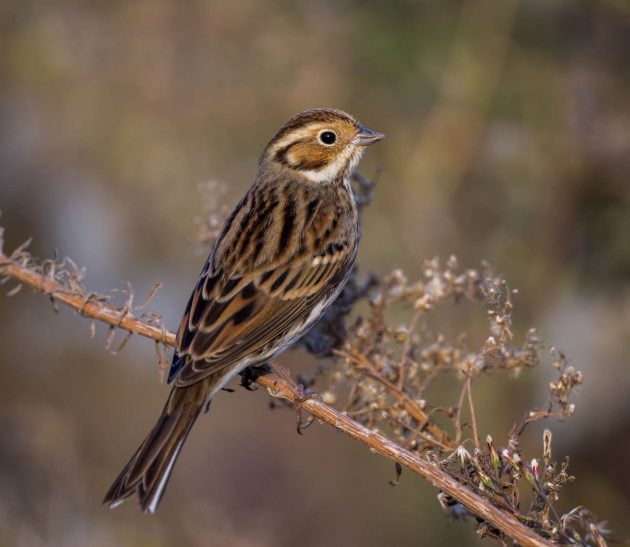
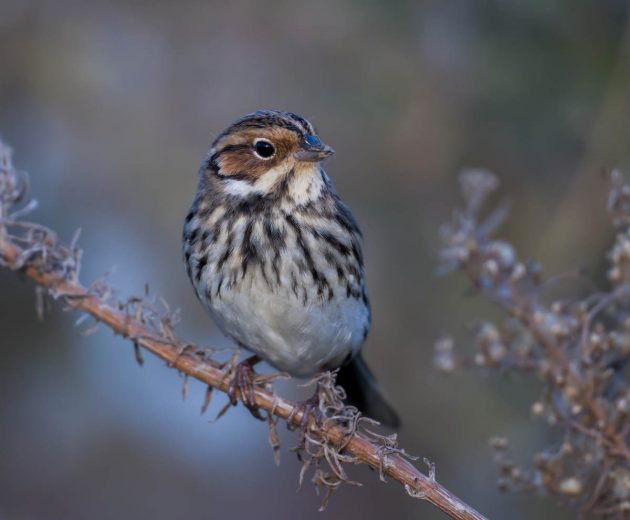
However, the most common bunting at Nanhui in winter is the Pallas’s Reed Bunting. Curiously, eBird states that the “song is a series of wet buzzy ‘tsli’ notes”. What are wet notes?
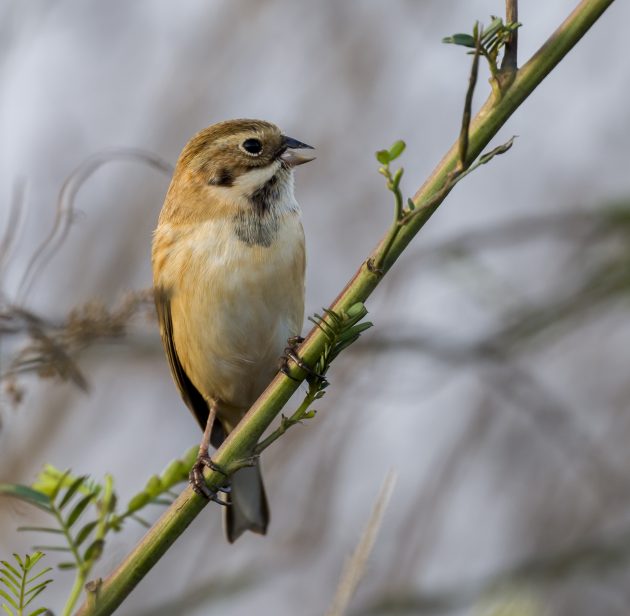
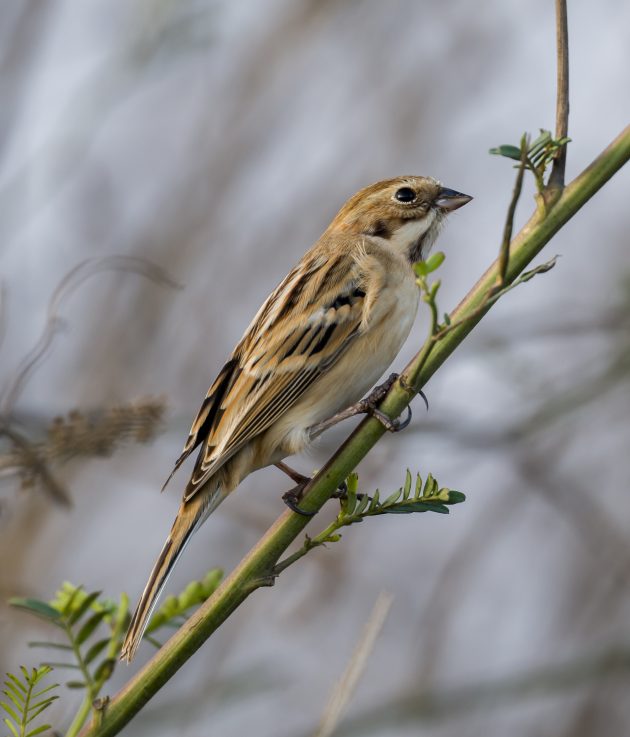
Since 2016, the Rustic Bunting has been listed as Vulnerable, as data suggested rapid population declines (HBW). led its listing as Vulnerable. Indeed, some papers have rather gloomy titles, such as “The next common and widespread bunting to go? Global population decline in the Rustic Bunting Emberiza rustica“.
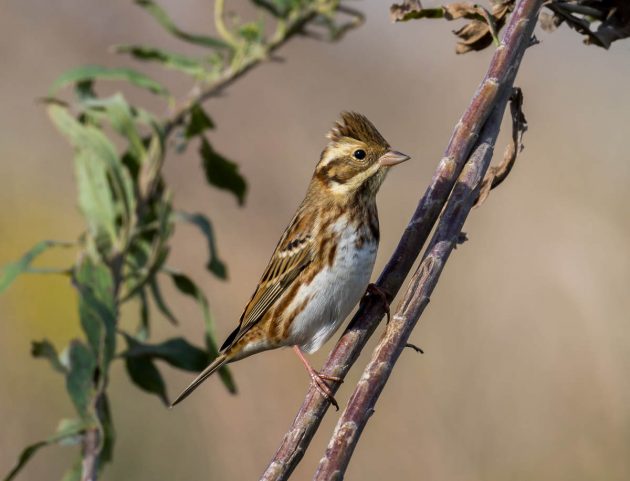
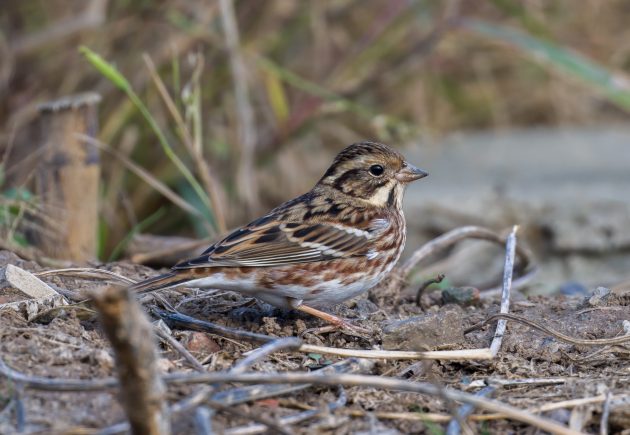
The migration patterns of Yellow-throated Buntings were analyzed via a rather clever yet somewhat complicated method, isotope-based geographic assignment. Given the complexity of the research, the result feels like a bit of a letdown – “northern populations start migration earlier than southern populations, especially in autumn”.
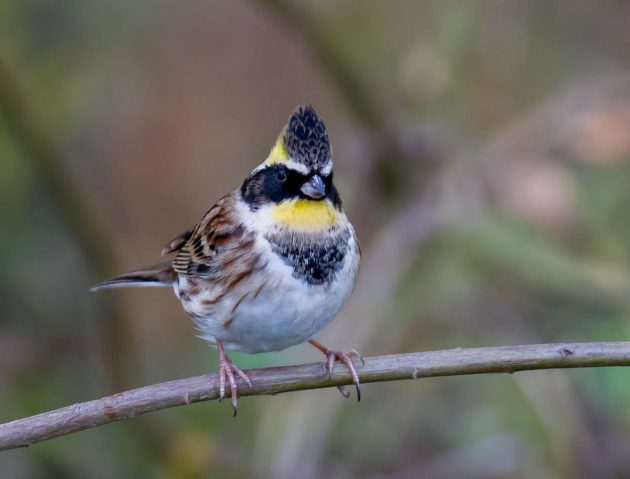
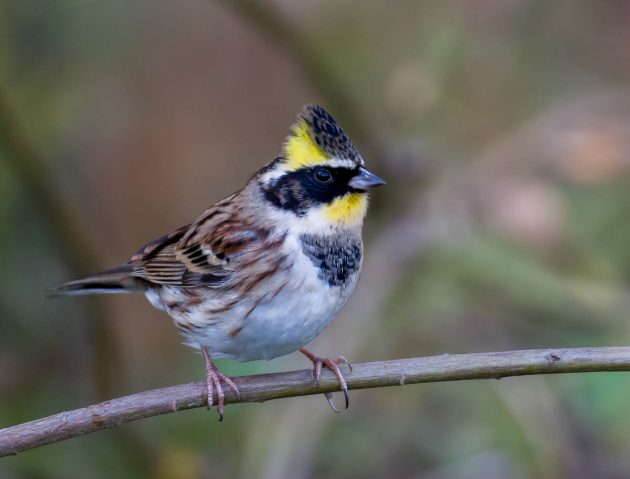
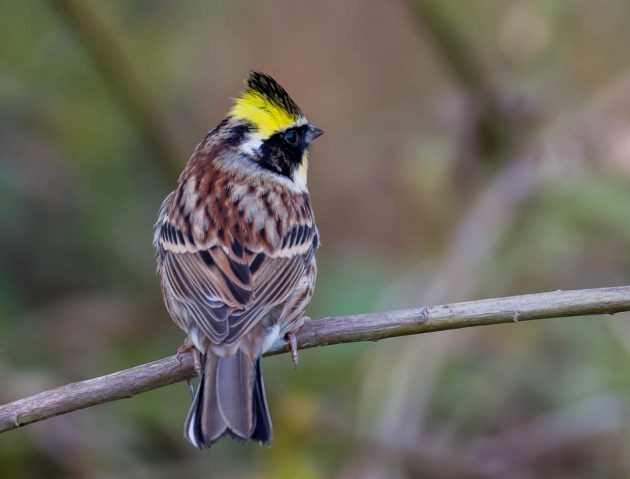
The species name of the Chestnut-eared Bunting is fucata, from the Latin “fucare”, to paint red.
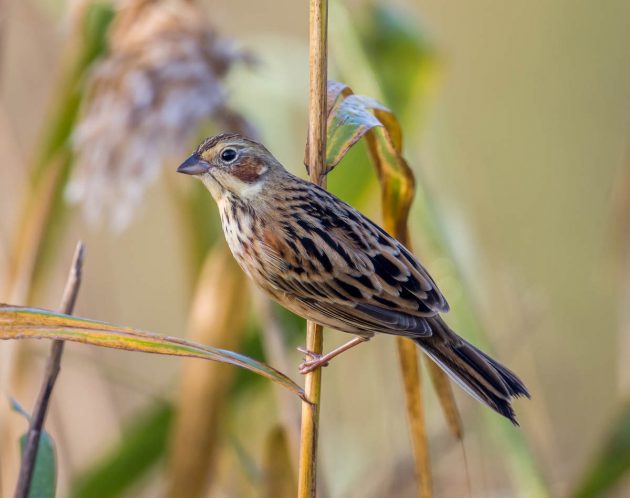
I did not find much about this bird online except for a paper with the exciting title “A new quill mite Torotrogla emberizae sp. nov. (Acariformes: Syringophilidae) from the Chestnut-eared Bunting (Passeriformes: Emberizidae) in Japan (morphology and DNA barcode data)”. Ah, to be a scientist.
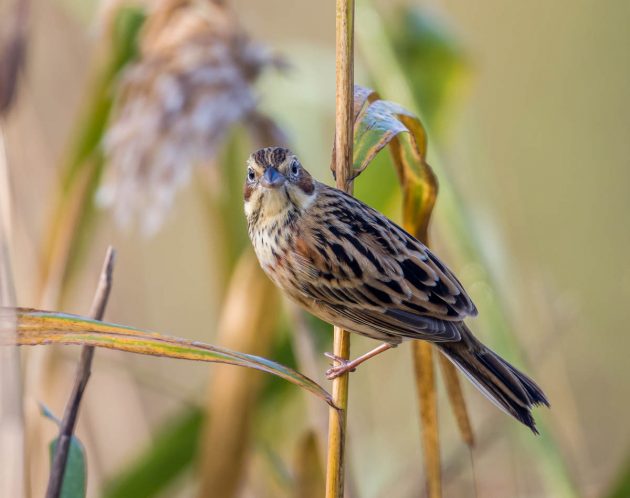
Hopefully, the winter time in Shanghai gives the Black-faced Buntings some time to relax from the challenges of the breeding season. A challenge for the males is getting cuckolded by members of the same species – which required strenuous mate-guarding (source). In contrast, the females need to make sure not to get duped into raising actual cuckoos – the buntings are a targeted host species (source). Fortunately for the buntings, they seem to detect most cuckoo eggs smuggled in (75% in one study).
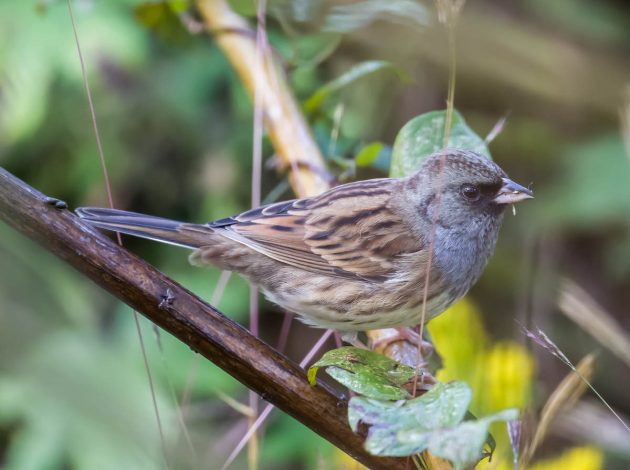
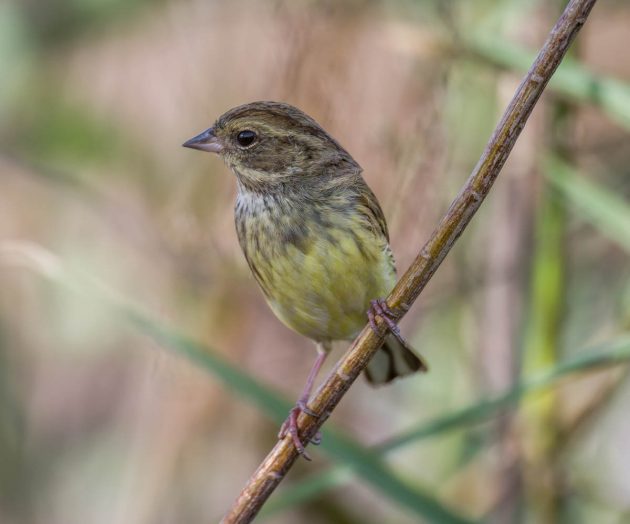
It seems that the defense mechanisms toward parasitism by cuckoos may vary within a species, depending on the size of the threat posed by cuckoos. A study found that for Plain Prinia, egg characteristics in a mainland China location with many cuckoos make it much easier to spot cuckoo eggs than in a Taiwan location with few cuckoos (source). For those who think evolution is a wrong theory, these differences may well have been created by god.
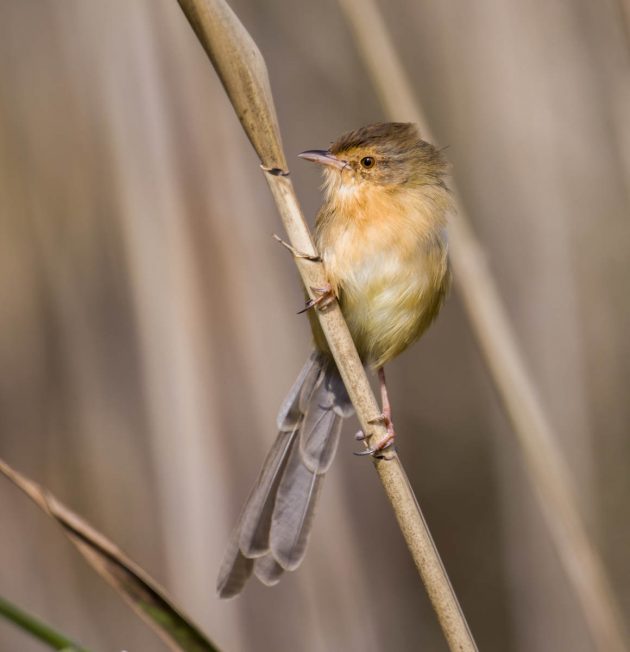
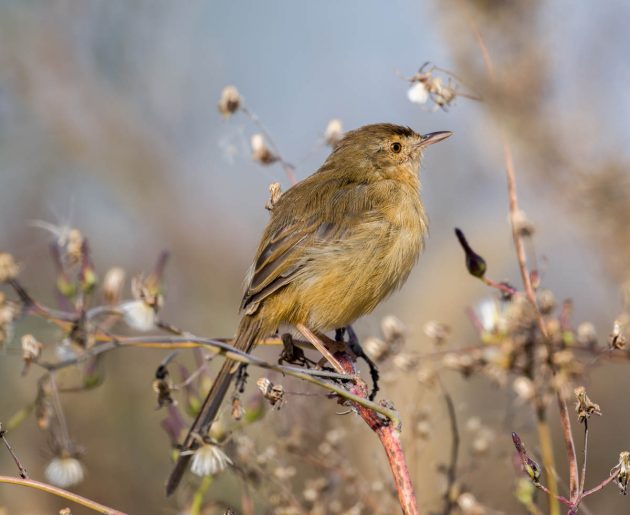
The Chestnut-crowned Warbler is very rare at Nanhui – in fact, it is the first one I have seen here in Shanghai. Elsewhere, it is common enough to also be parasitized by cuckoos – which has made them start to reject eggs based on size (source).
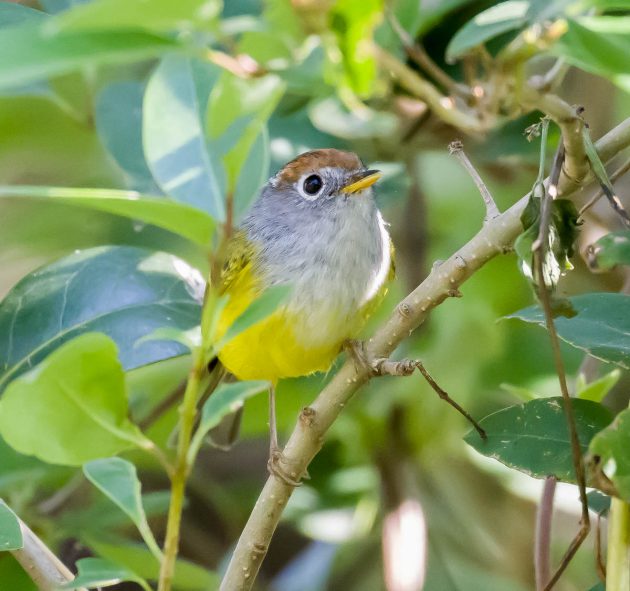
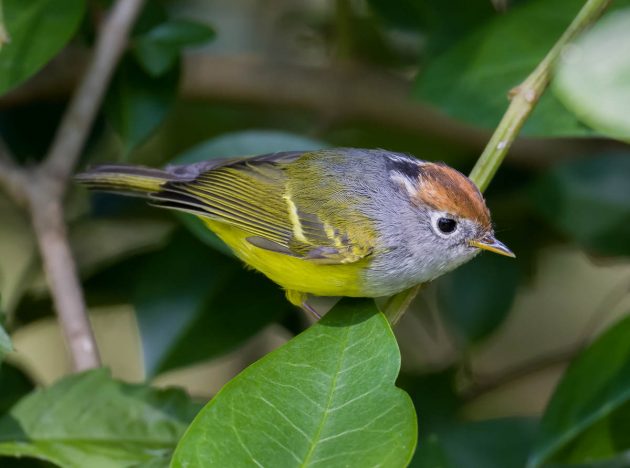
Given that this bird moves very fast and thus leads to bird photographers spending a lot of time getting mostly completely unusable photos, I think the parasitism is well-deserved. Maybe there is some justice in this world after all.
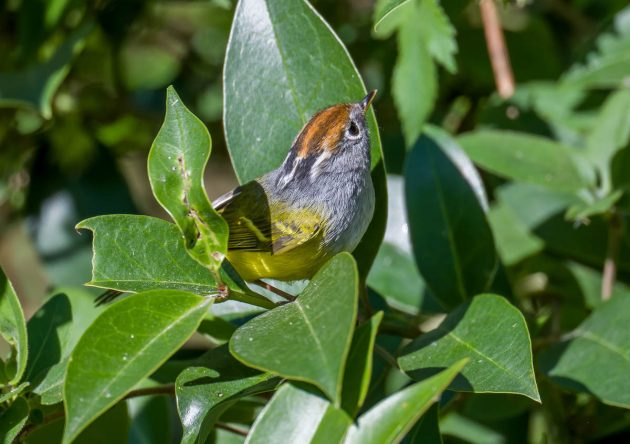
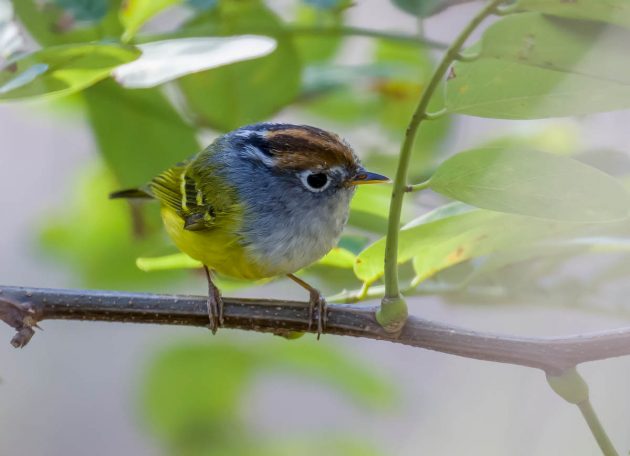
Bramblings in Finland – though not actually being parasitized by cuckoos – nevertheless rejected the vast majority of non-matching eggs in a study – they thus seem well-prepared for a potential future cuckoo invasion. Better safe than sorry.
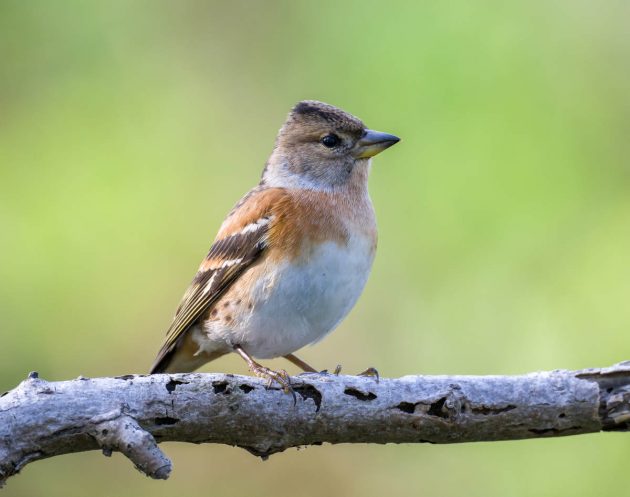
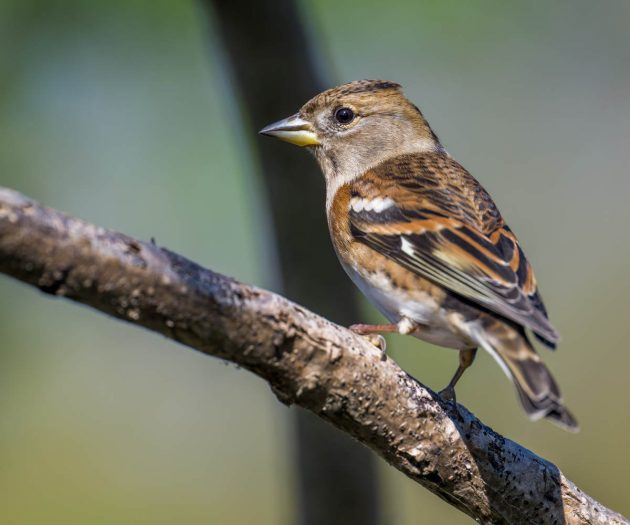
I may have said this before, but thrushes always remind me a bit of German housewives – robust and reliable, but not particularly graceful (there is a reason I live in China and not in Germany). This certainly applies to the relatively featureless Pale Thrush, which basically lives up to its unpromising name rather well.
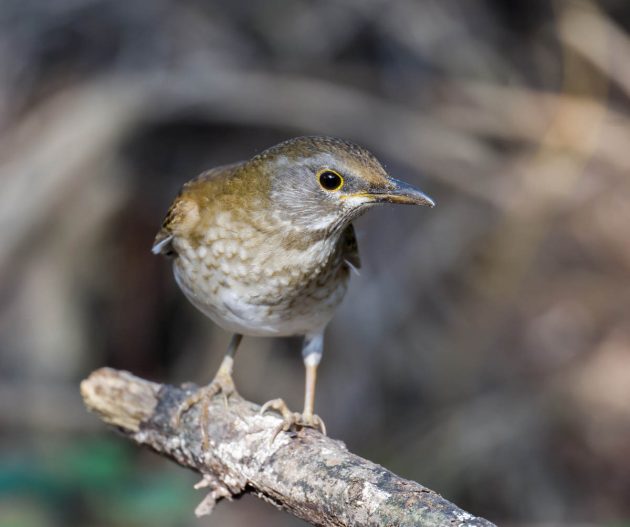
This thrush actually is among the prey items of the very rare Iriomote Cat, a cat that lives only on a small island. As it is critically endangered (there are only about 100 left), I think it can be forgiven for killing the occasional Pale Thrush (which is listed as Least Concern).
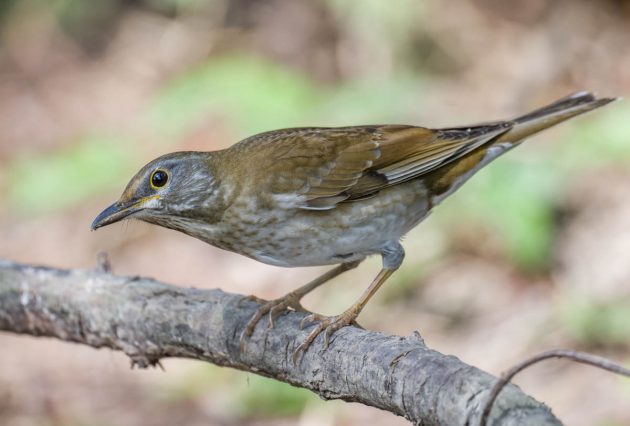
The White-browed Thrush is not a lot more attractive. As a consequence, it only plays a very small cameo role in a paper on the time required for species detection via camera traps.
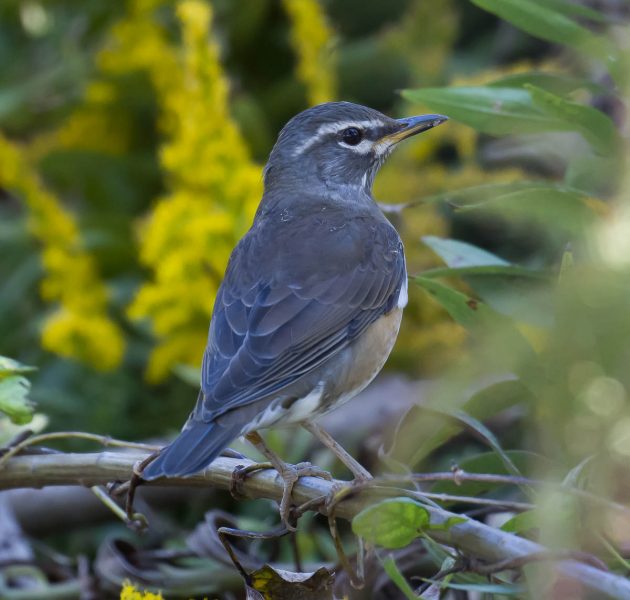
And what can you expect of a species named Dusky Thrush? Actually, it looks a bit more interesting than the name suggests, I think.
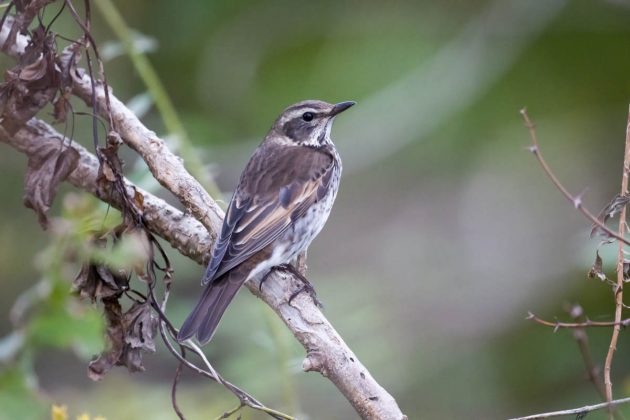
On the other hand, it gets some points deducted for looking too similar to Naumann’s Thrush. The bird is named after Johann Andreas Naumann (1744-1826), a farmer and amateur naturalist who – despite being a German – apparently did not commit any noteworthy atrocities.
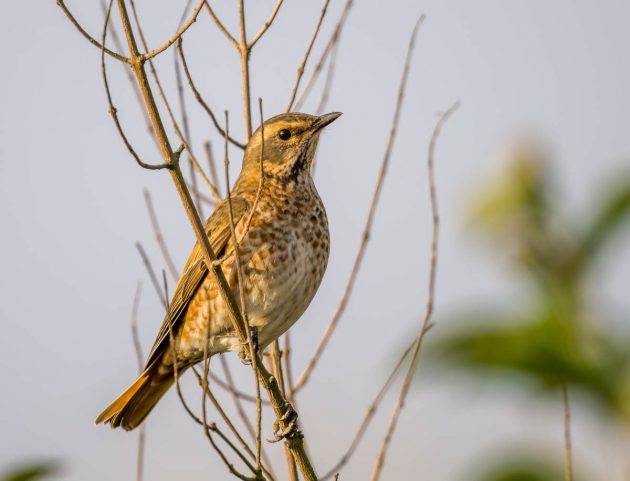
Admittedly, the male Japanese Thrush does not quite fit into the thrush pattern as it is quite attractive. One Japanese study found that it arrives at its breeding grounds earlier than in the past, most likely due to increased spring temperatures. Why these have occurred, nobody knows – it cannot be due to global warming as Donald Trump in 2012 has made clear that climate change was “created by and for the Chinese in order to make US manufacturing non-competitive” (source).
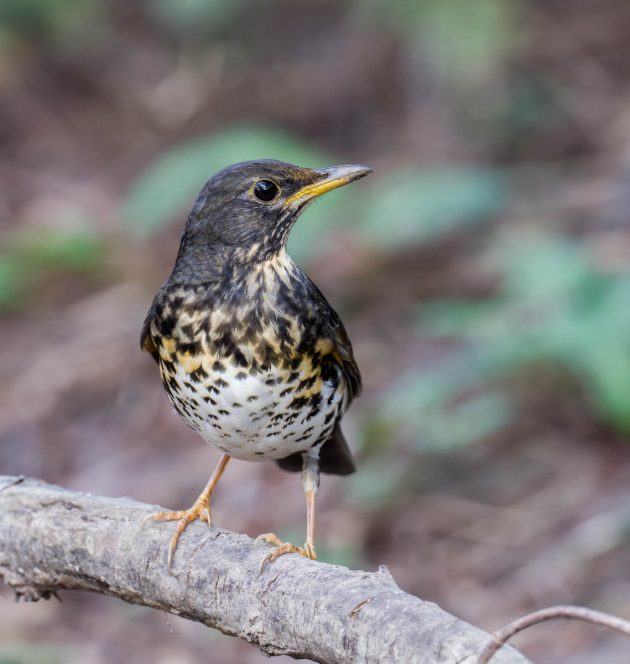
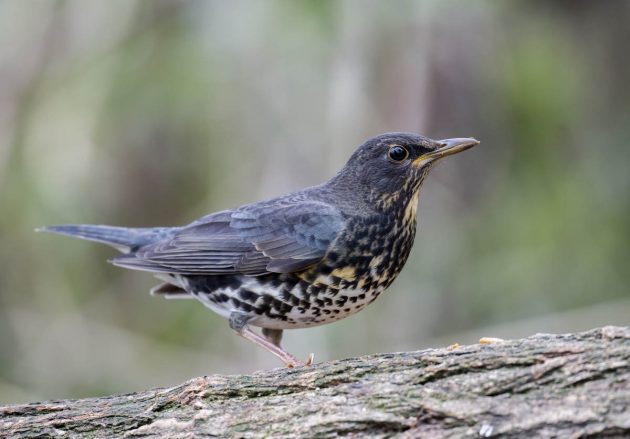
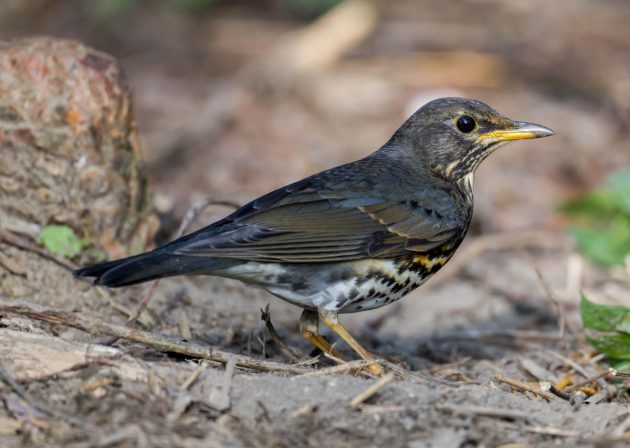
The female is not quite as attractive but still easily beats most German housewives.
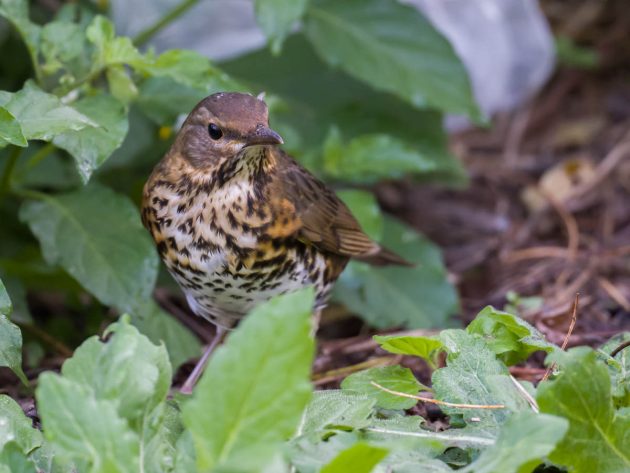
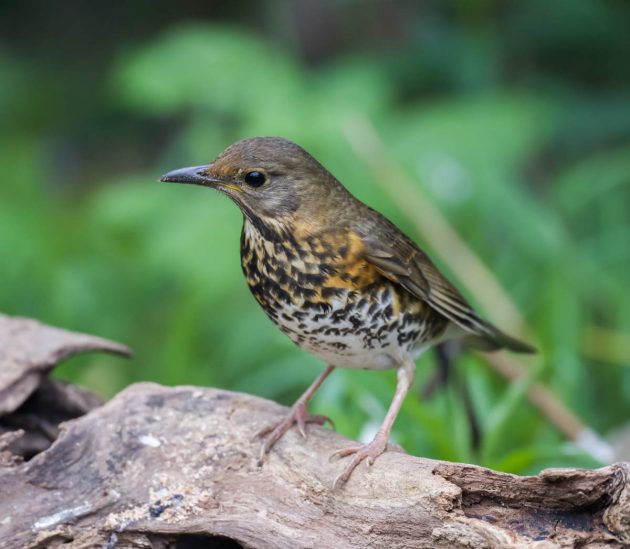
Given the expertise of Mr. Trump, the Chinese must also be responsible for the earlier laying date of Northern Lapwings, as described here.
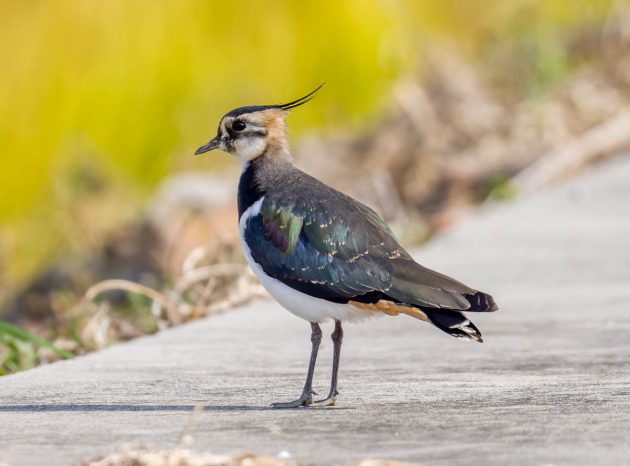
Strangely, the Latin name of the Hair-crested Drongo is Dicrurus hottentottus – Hottentot is a name previously given to the Khoikhoi, a nomad pastoral people of Namibia and South Africa, far away from where this drongo lives. The name Hottentot is better no longer used due to its negative connotations: “The first Dutch to encounter the San and Khoikhoi peoples referred to them as ‘Hottentots,’ or stutterers, because their Khoisan language employs clicks to denote consonants, a feature of speech unsympathetic to European ears. Thus, the disparaging term “Hottentot” became a standard identifier of the inhabitants of southwest Africa” (source). Thus, the poor drongo is contributing to the perpetuation of racism …

Do the male Hair-crested Drongos seek to have sex with females other than their fixed partner (they are socially monogamous)? Yes, but only if there are enough females around, finds a study. Hm.
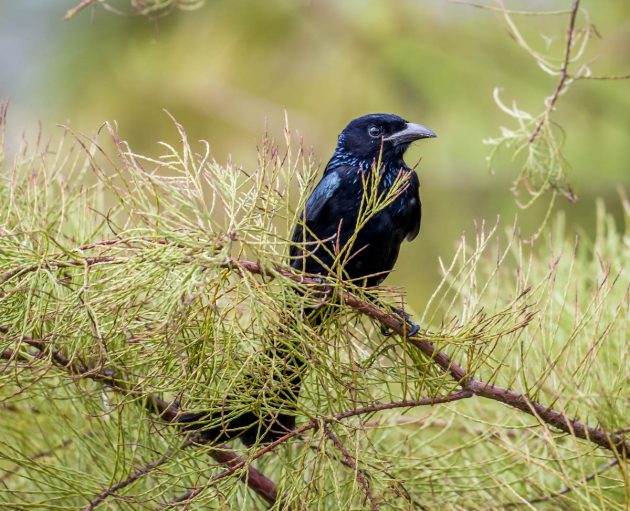
As with many other bird species, the Latin name of the Hen Harrier, cyaneus (“dark blue”), is not a very good description of the female.
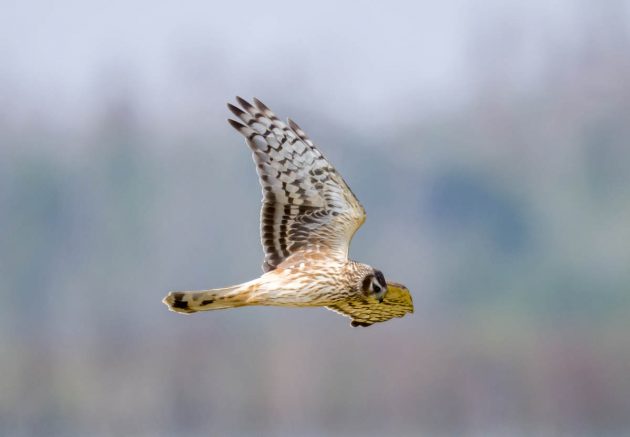
Unfortunately, Hen Harriers die disproportionally near British Grouse moors – most likely killed illegally by people hunting grouse for sports (source). I thought the British see themselves as very fair sportspeople – this is definitely not a good example. I wish there was a way to give some guns to Hen Harriers so that they could shoot back.

According to this paper, “Feeding by Black-faced Spoonbills often looked chaotic because they usually walk all over the feeding site at a variable speed”. You can see for yourself here.
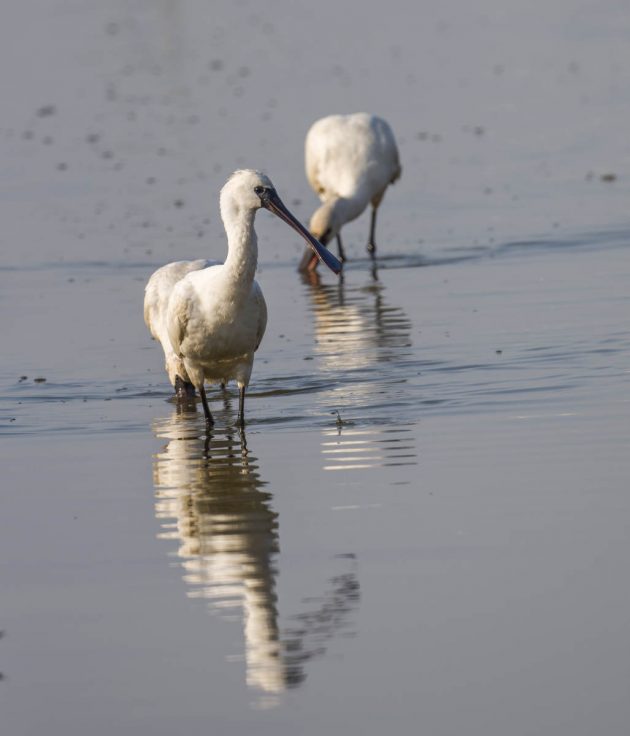
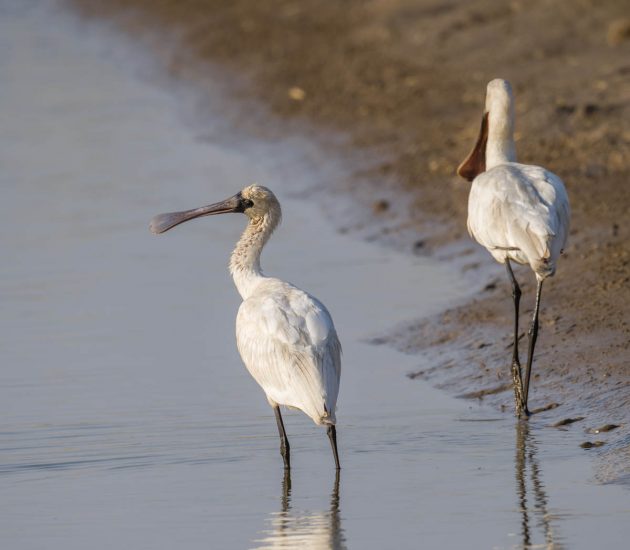
And yes, they are mixed with Eurasian Spoonbills. If you are a frog and want to read a horror story, you may want to check out this paper. In which a largish marsh frog – resisting being swallowed by a Eurasian Spoonbill by spreading its limbs – gets them broken one by one until resistance is futile and the frog gets swallowed after 10 minutes. Guantanamo for frogs. Though to be historically accurate, the breaking wheel would be a better comparison. Then again, what the spoonbill does also has its waterboarding component: “[The bird] shook the marsh frog under the water to break the limbs one by one”.
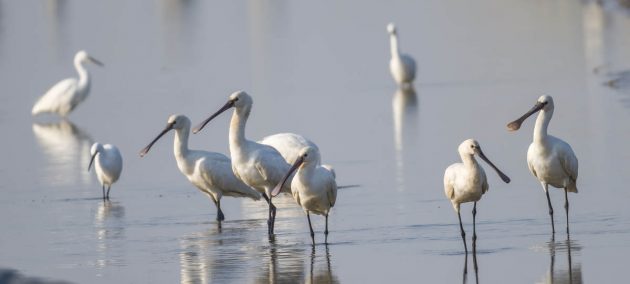
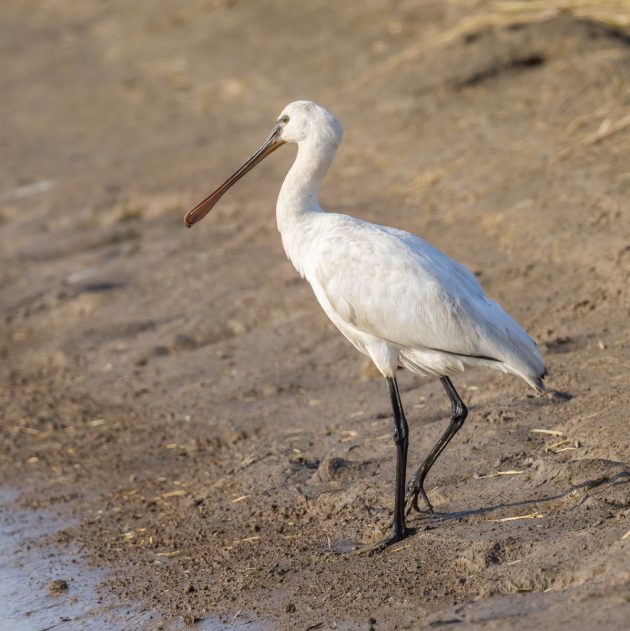
Among philosophically-minded Dunlins, the dichotomy between being an individual …
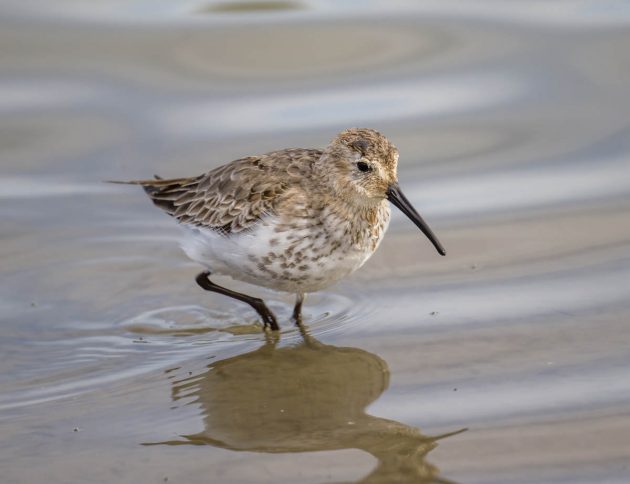
… and being part of a large society is widely discussed.
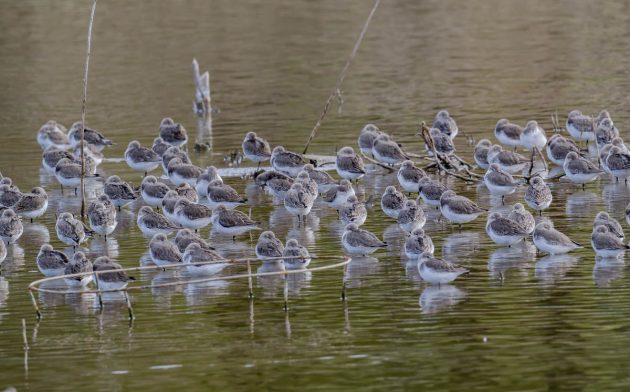
In an analysis of birds sold at Indonesian bird markets, the Scaly-breasted Munia was found to be by far the most numerous species, accounting for more than half of all individuals. Weirdly, this bird is also described as a common pest in Indonesia, responsible for substantial losses of rice. On the other hand, in the West, mice, and rats are also kept as pets, maybe with the same logic.
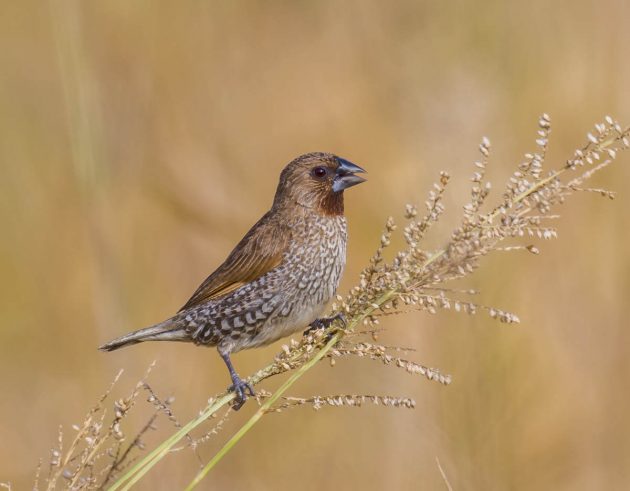
The Pallas’s Leaf Warbler shares its name with at least 6 other bird species including the bunting shown above – a bit of an overkill if you ask me. On the other hand, he got his Ph.D. when he was 19 while it took me 10 years more. No wonder no species are named after me.
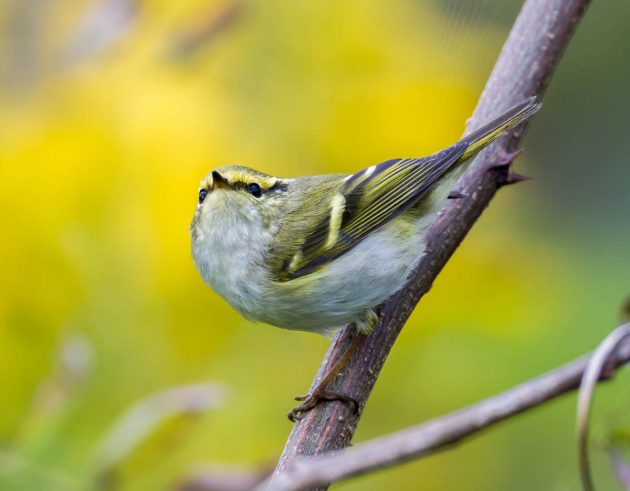
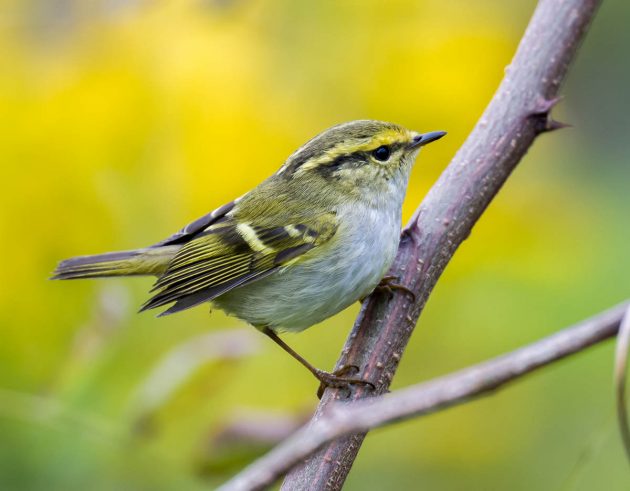
It seems that Black-tailed Godwits are a bit more individualistic than many other species. A study found that they arrive at their breeding grounds across a span of more than five weeks – substantially larger than for most other birds. Presumably, the late arrivals then mate with other late arrivals, further pronouncing the differences and eventually leading to two subspecies, Black-tailed Godwit rapidus and Black-tailed Godwit tardus (yes, I studied Latin in high school and am happy to show off about this).
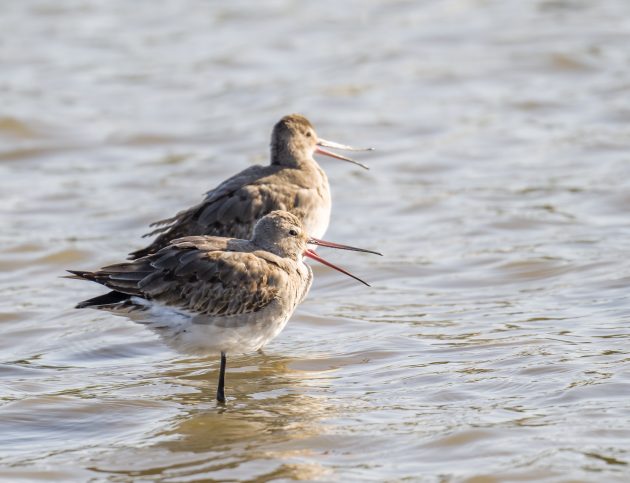
I do not have anything interesting to say about the Red-flanked Bluetail right now, but the male is a very beautiful bird.
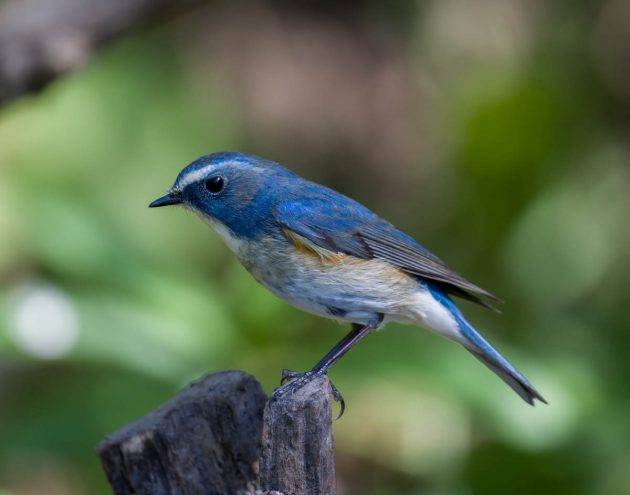
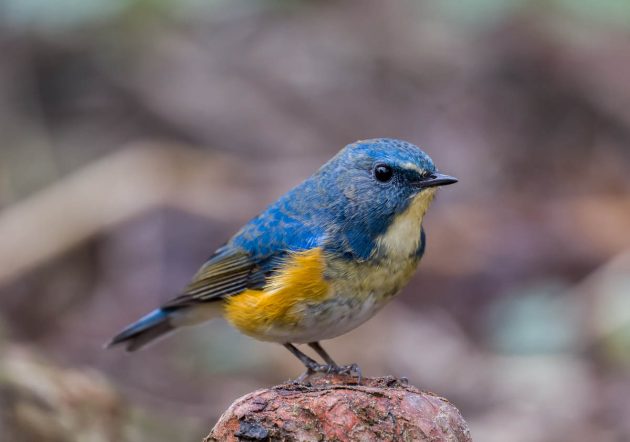
A study on the breeding success of the Grey Heron had one very predictable result (“chick mortality significantly decreased with increasing numbers of feeding visits per nest”) and one slightly horrifying one (“siblicide was also a very important reason of chick mortality in those colonies – 54% and 32% chicks died in nests where sibling aggression was observed”). So assuming that these results are transferable to humans, parents should feed their offspring regularly (first finding) but restrict themselves to one child (second finding).

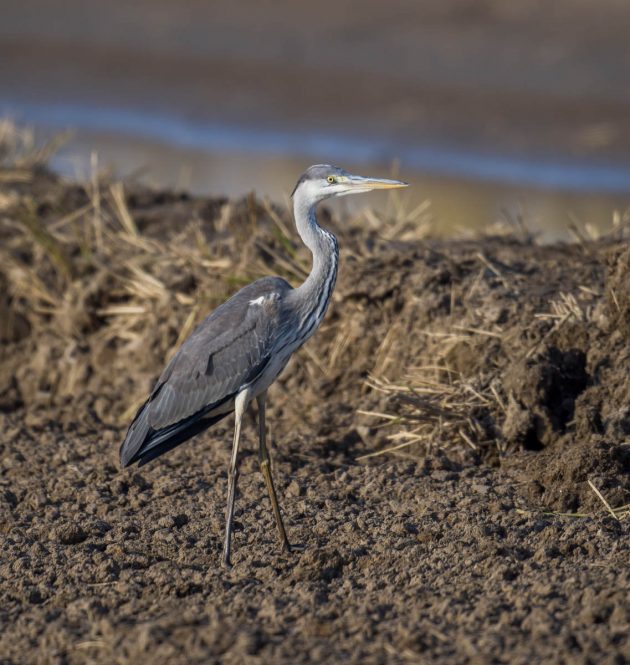
Possibly a survivor of siblicide (which would make it a killer, right?)
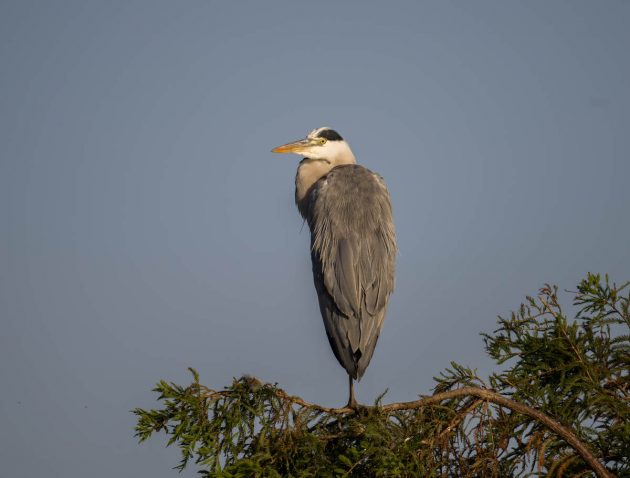
In a paper on the Oriental Turtle Dove, Toshio Okazaki and Shinichiro make the bold claim that the “study represents the first demonstration of protoporphyrin IX in dove plumage”.
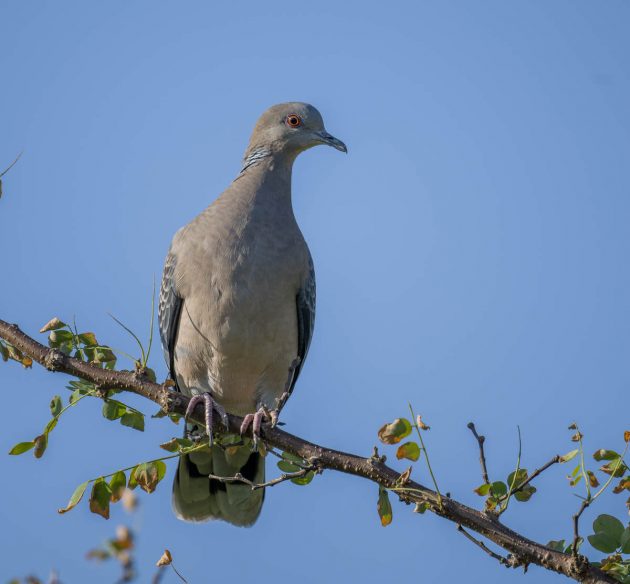
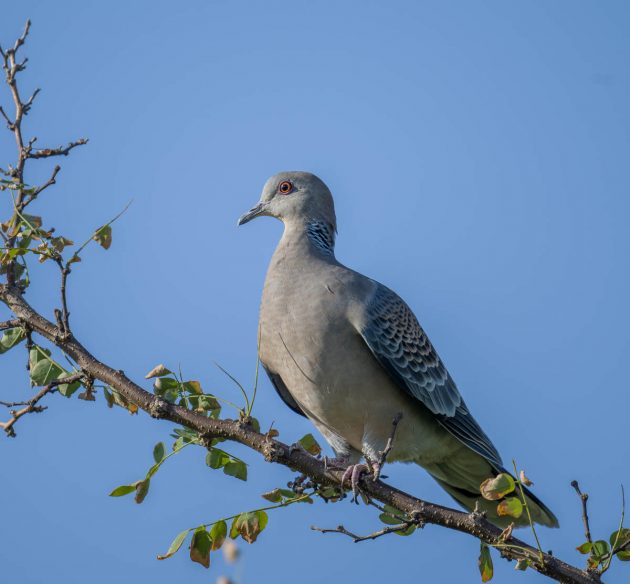
It seems Black-winged Stilts have a preference for using one or the other eye depending on the activity (“behavioral lateralization”, to sound like a real scientist). They are more successful catching food when looking with their right eye but the males prefer to look at the females with their left eye. If that isn’t proof of an almighty creator god, then what is?
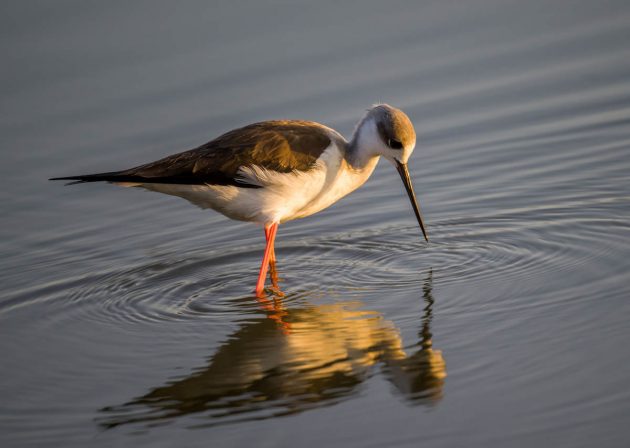
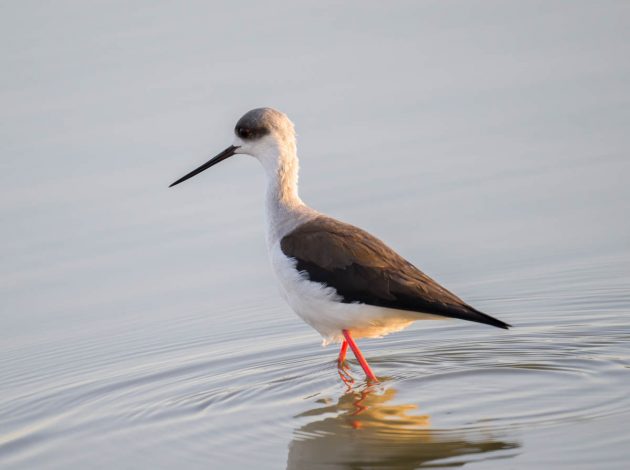
eBird calls the Black-winged Stilt a “striking large black-and-white wader with a thin, straight bill and bright pink legs” – a mistake, as my photo shows the bird clearly only has one leg.
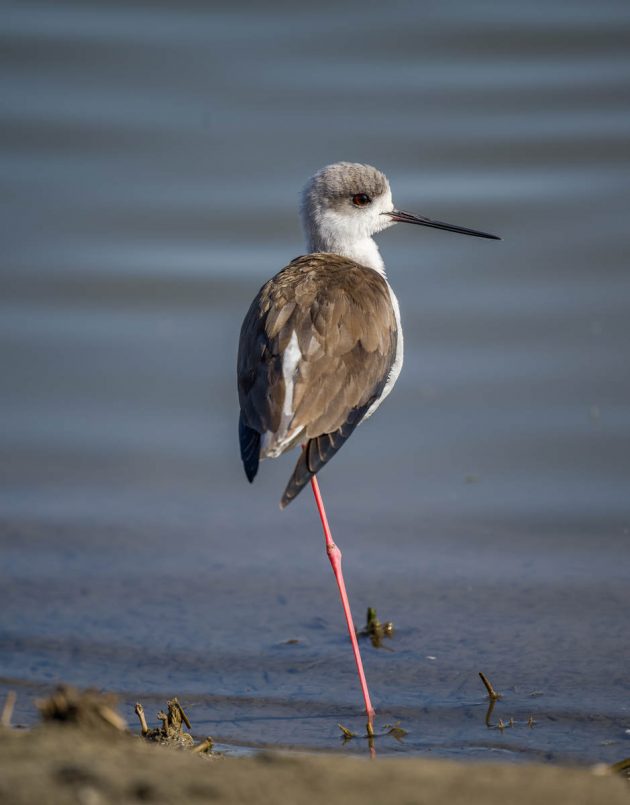
My guess is that (similar to some actors who did not successfully make the transition from silent movies to talkies), Pied Kingfishers were more popular with bird photographers before color photography became widely used. It is the only kingfisher without any color other than black and white (the male Crested Kingfisher has some rufous bits on its breast).
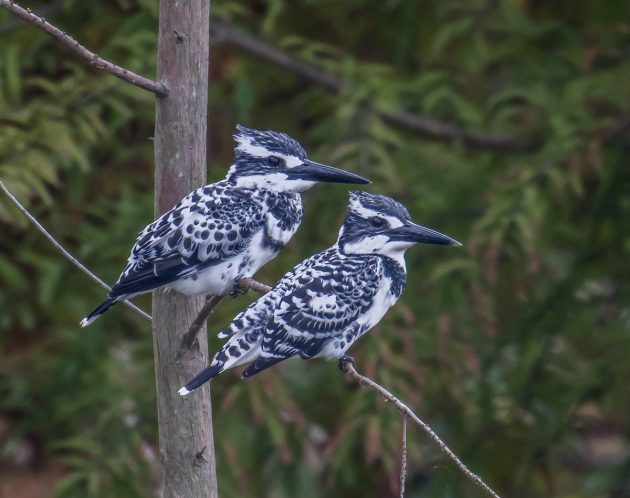
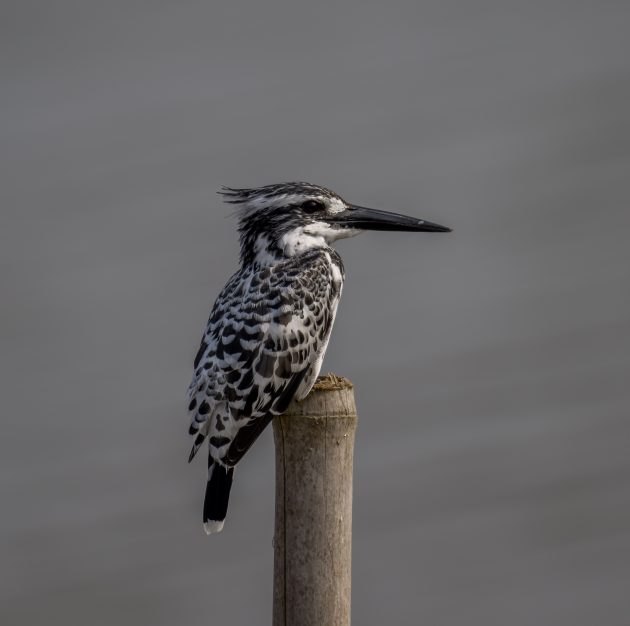
As this video indicates, these birds spend a lot of time not doing much – or in scientific terms, “resting/perching”. This was found in a study – do you want to guess where this study was done? A slight hint – the title of the study is “Activity patterns of pied kingfisher (Ceryle rudis) and stork-billed kingfisher (Pelargopsis capensis) at the Chittagong university campus, Bangladesh” …
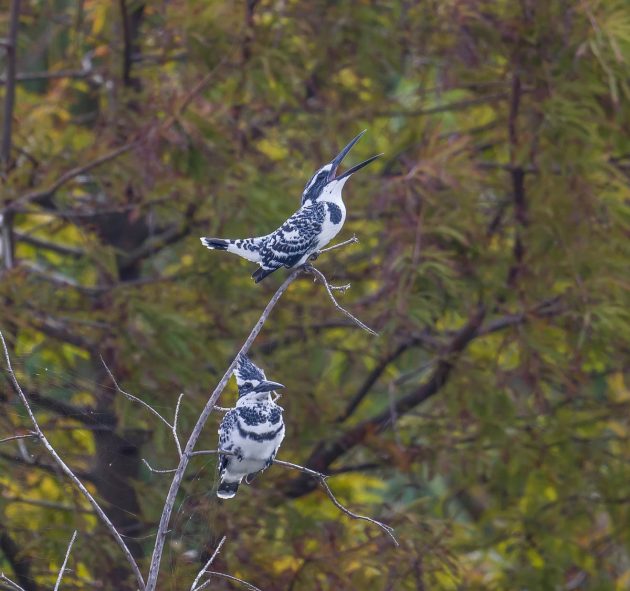
Chinese Penduline Tits apparently bury their eggs inside their nests to prevent them from falling out of the nests on windy days. The obvious other solution – building sturdier nests made from concrete reinforced with steel, as any decent human would propose – does not seem to cross their minds.
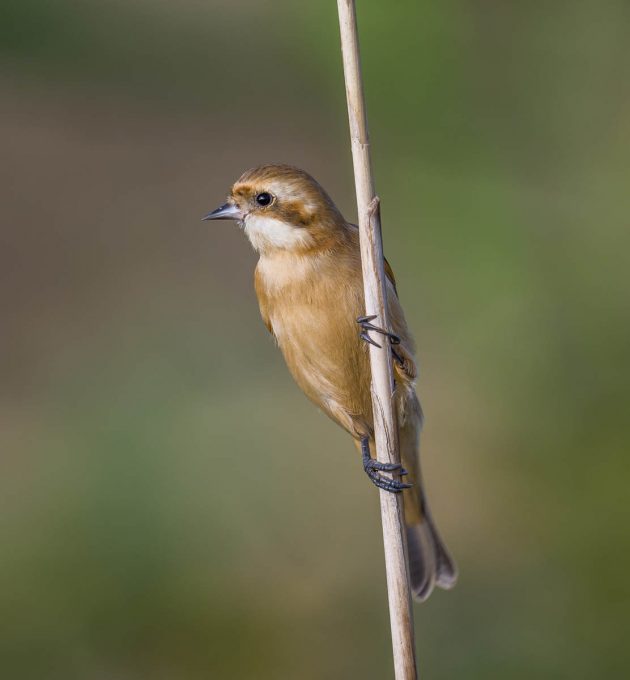
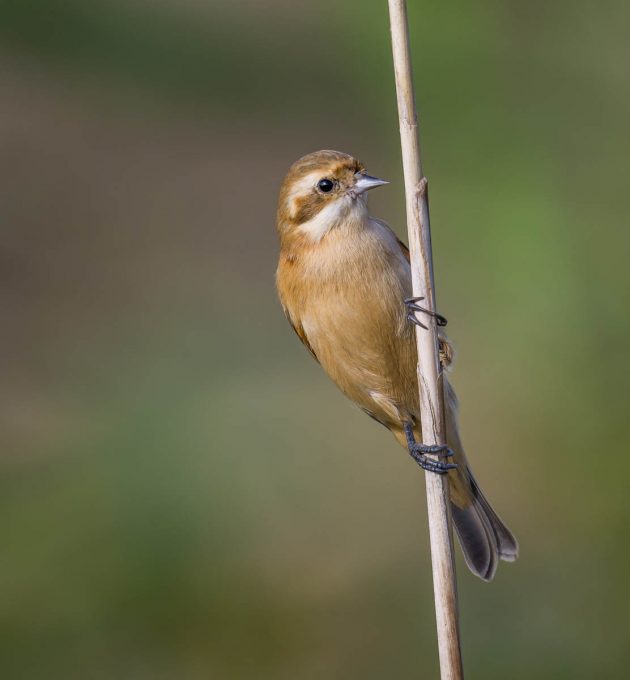
Black-crowned Night Herons (at least the adults) seem to enjoy the autumn colors, as they nicely complement their own appearance.
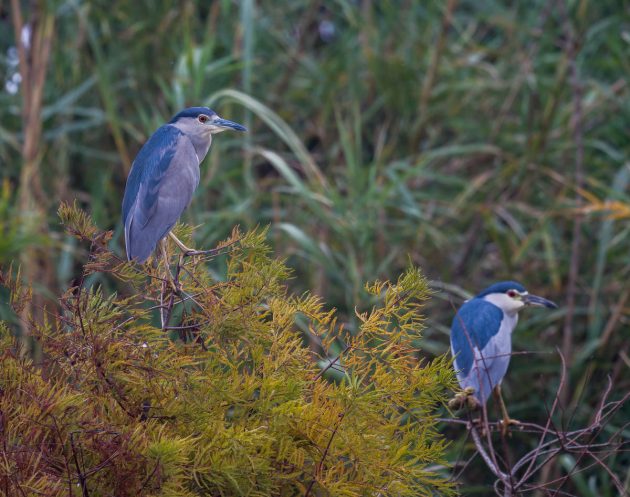
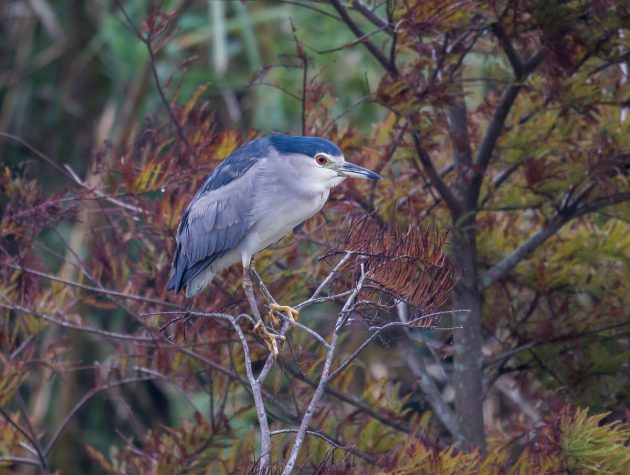
The juveniles look miserable as usual.
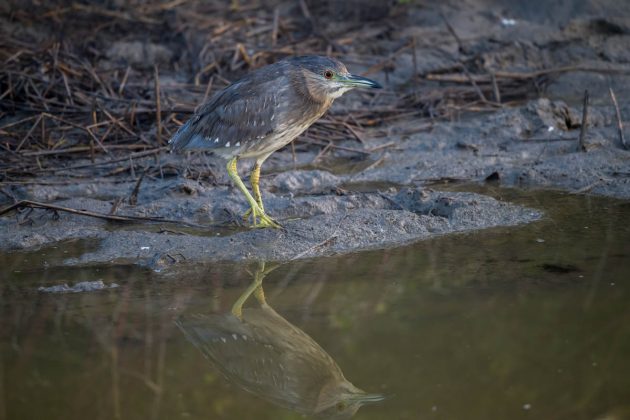
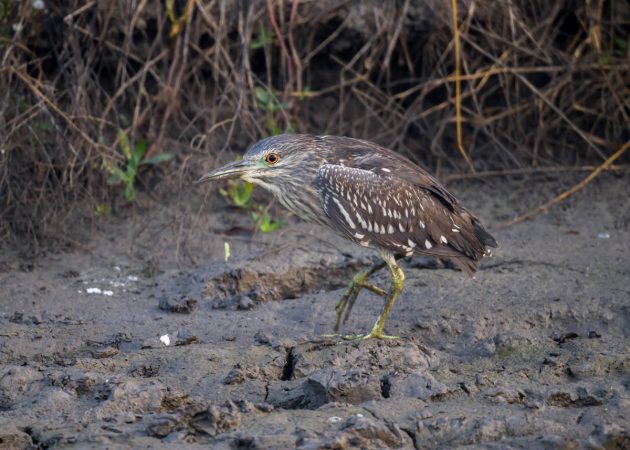
The field identification section of the HBW entry for the Chinese Grey Shrike has a much nicer photo than this one, taken by me 5 years ago. Well, I guess I was a better photographer then.
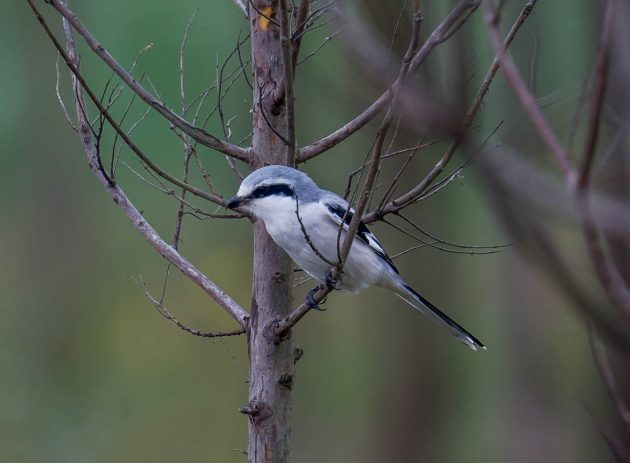
Eurasian Woodcocks are usually much better hidden than shown in my recent post. A typical daytime encounter may look like this:
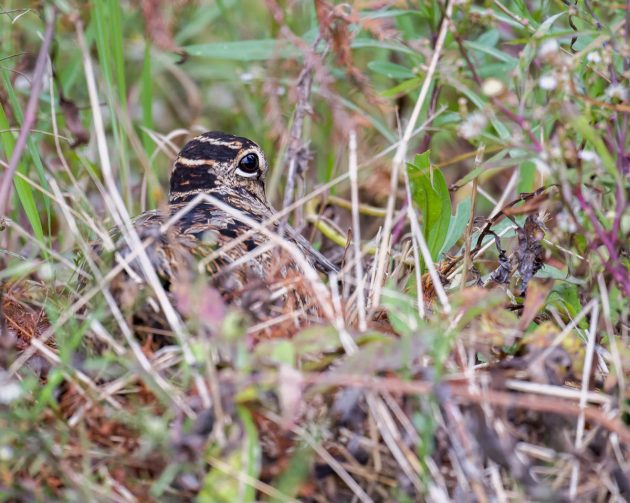
And I am sure that if this post had been written by Dave Barry, he would remark that Eurasian Woodcocks would be a great name for a punk band.
The HBW entry for the Mallard has a 300-word section on priorities for future research only – kind of puzzling given that this is certainly a well-researched species. But then, maybe not – it seems to be the nature of science that the more you know, the more you want to know. So much for this post’s pseudo-philosophical thought.
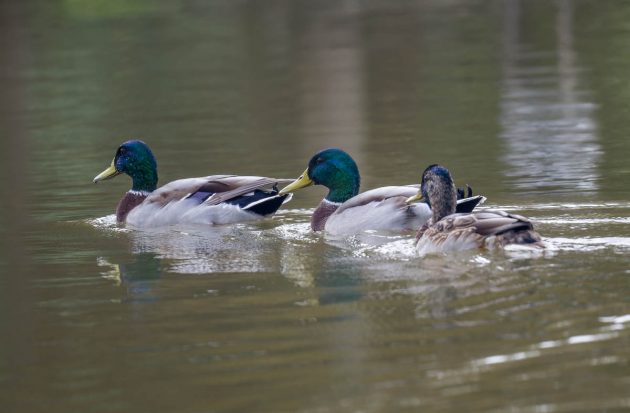
The courtship of the Greater Scaup sounds a bit frightening to me: “During courtship, males gather in groups of up to 17 and surround a single female while calling” (source). On the other hand, maybe some female readers of this blog think that this sounds rather exciting. Among newly published books (the titles of which I sometimes scan), quite a few are titles in the “reverse harem” genre – goodreads even has its own page on the genre.
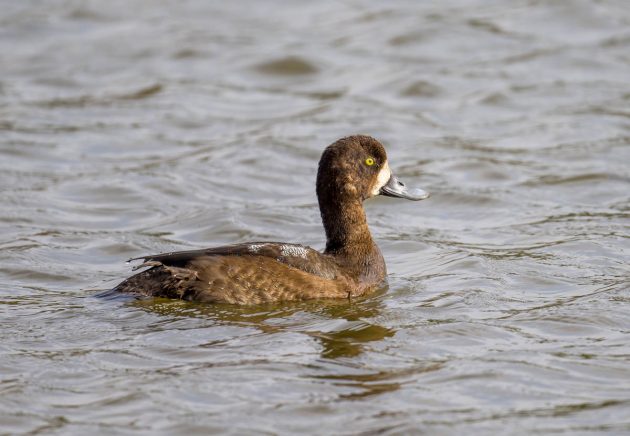
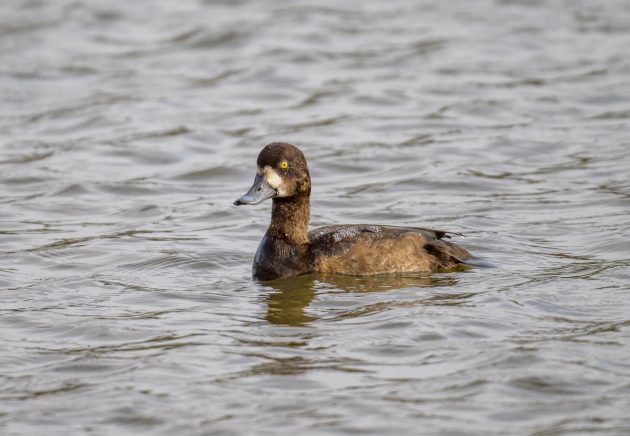
There is (or was?) a journal with the somewhat improbable-sounding name of “Journal of Thermal Biology”. I am not sure what exactly thermal biology is, but the journal published a paper on the thermal properties of nests of the Eurasian Tree Sparrow. Which finds that the “insulating value of nests mostly depended on their completeness and the proportion of feathers in the lining”.
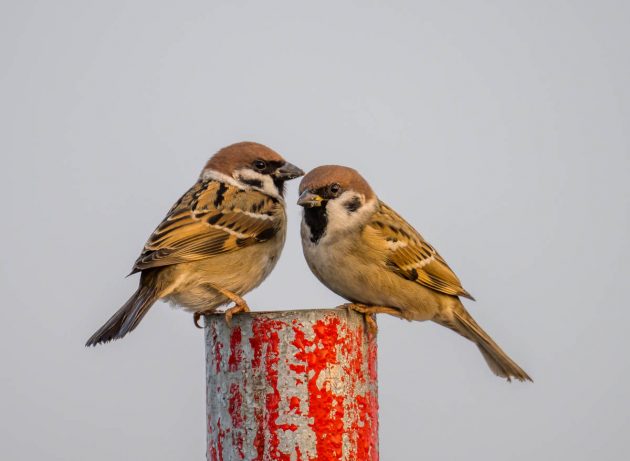
The species name of the Narcissus Flycatcher was probably not chosen with the female in mind (shown here) – according to the HBW, “Narcissus was a beautiful youth who became enamored of his own reflection in a pool and wasted away”. This was later taken up by Oscar Wilde in the story “The Disciple” (“Keats and Yeates are on your side while Wilde is on mine”, The Smiths, “Cemetery Gates”).
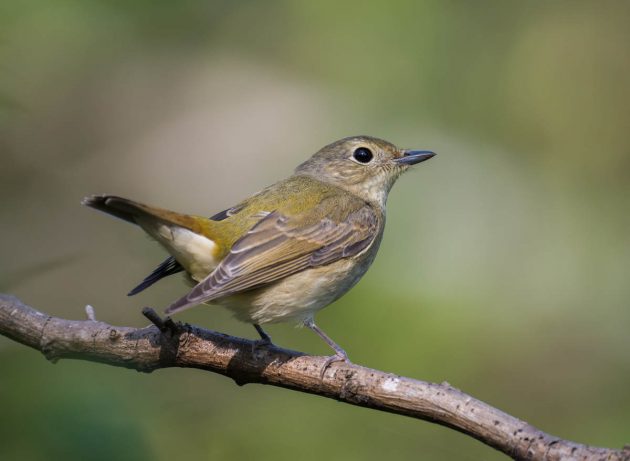
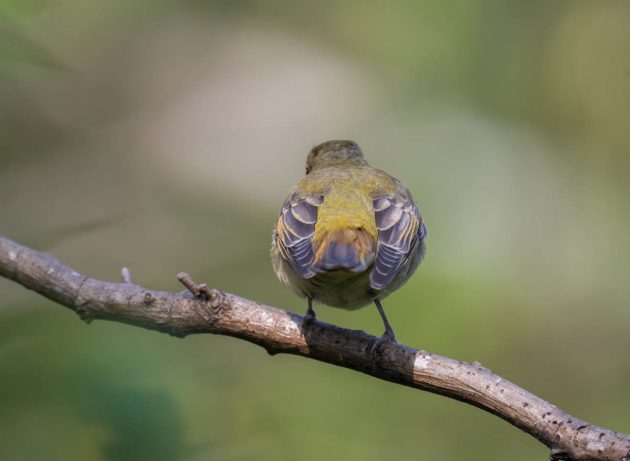
Vinous-throated Parrotbills are parasitized by the Common Cuckoo, the Vladimir Putin of the bird world – according to the HBW, “cuckoos’ eggs are always of a blue type but larger than those of host, and host rejected more than 60% of cuckoo eggs when laid in blue-egg clutches and 100% when laid in white-egg clutches.”
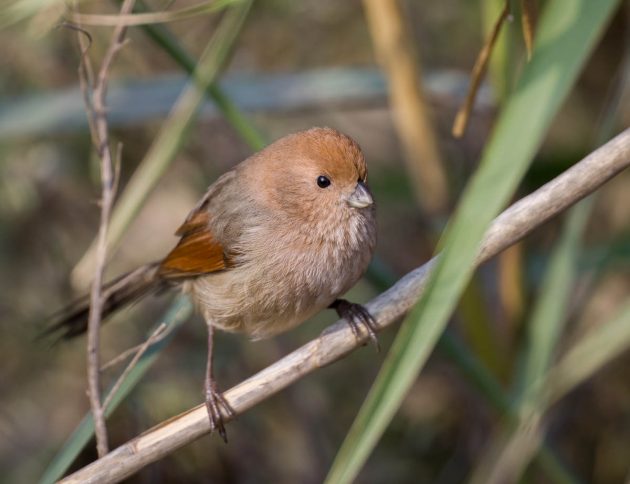













Leave a Comment